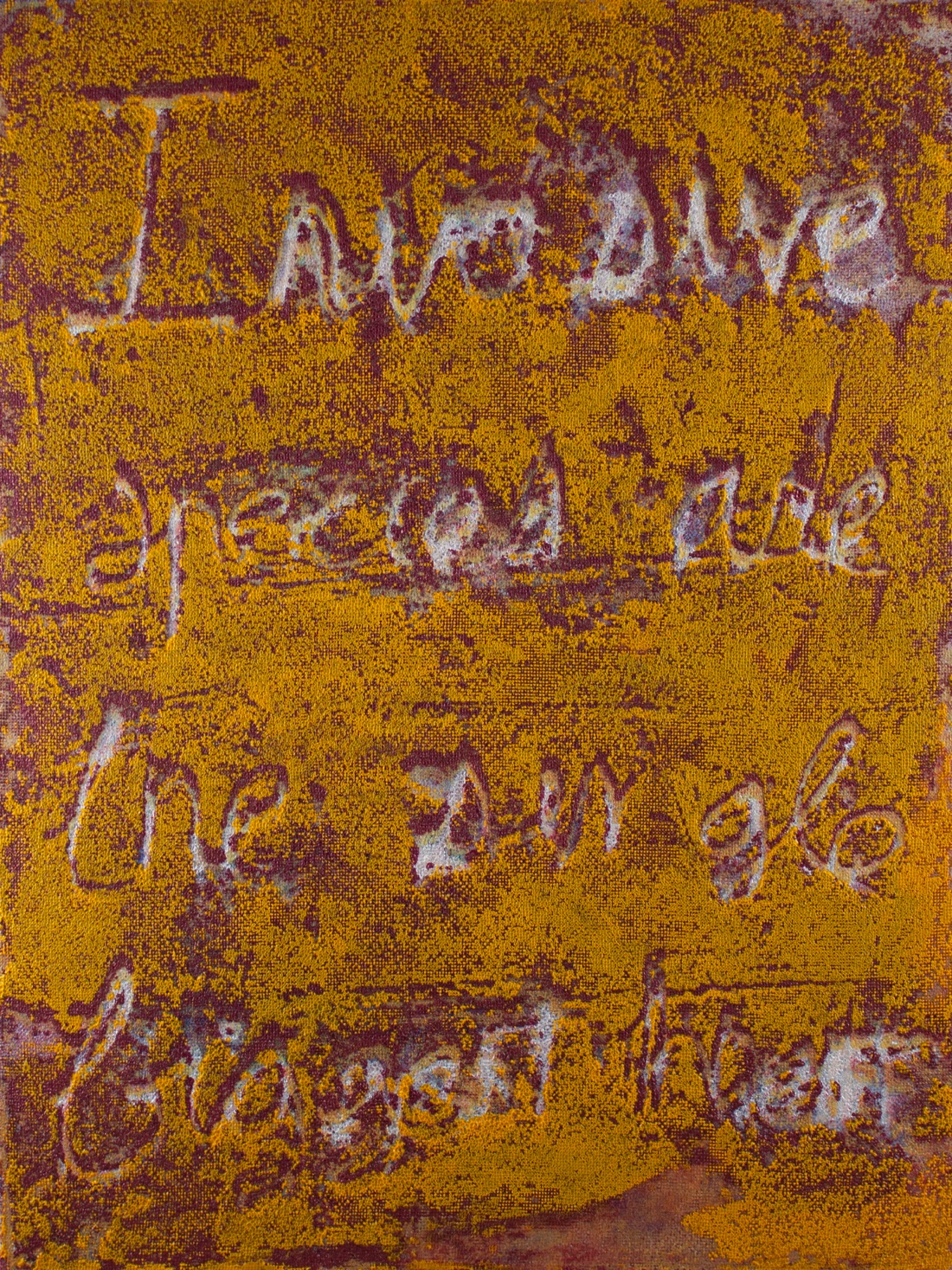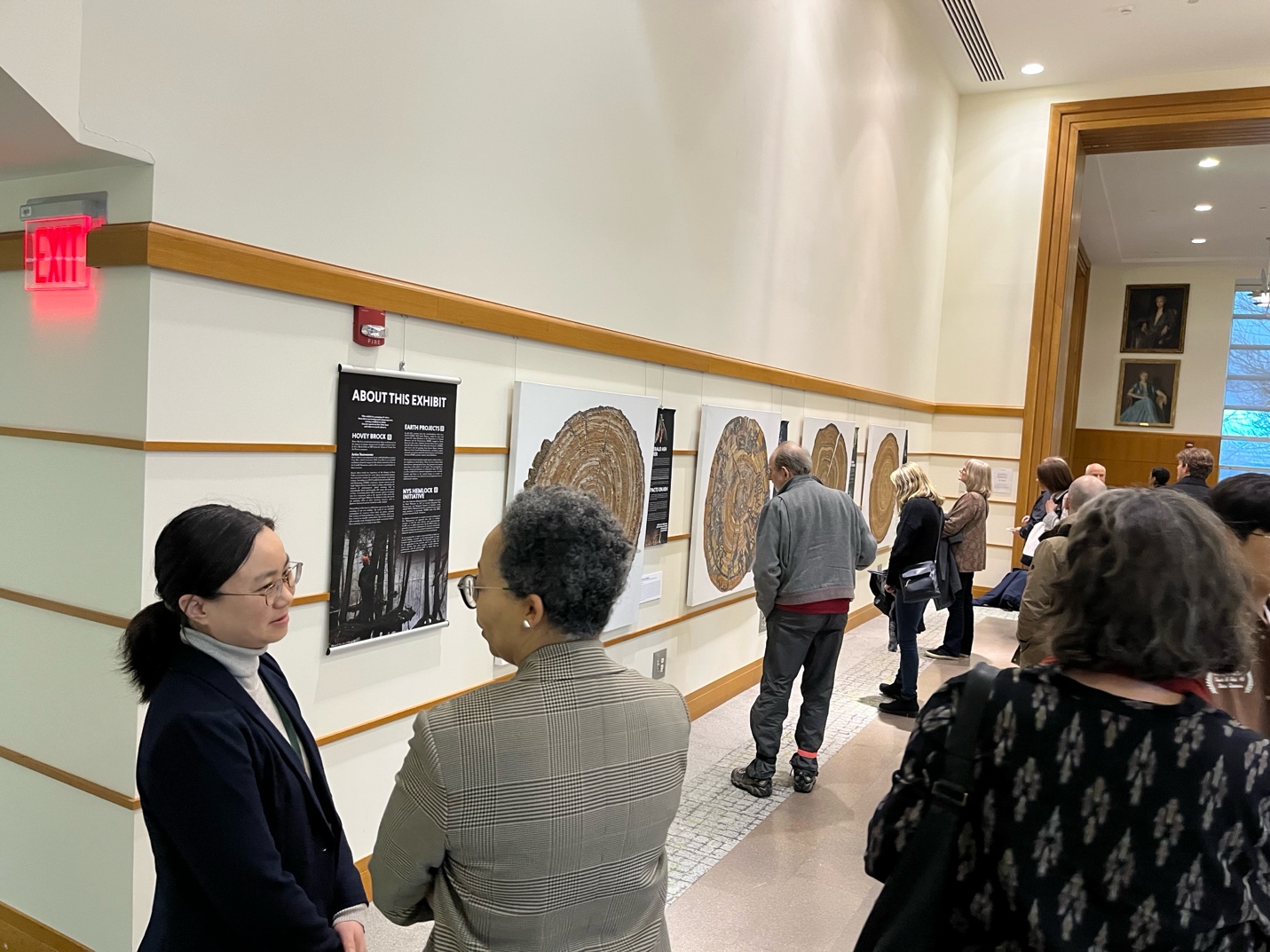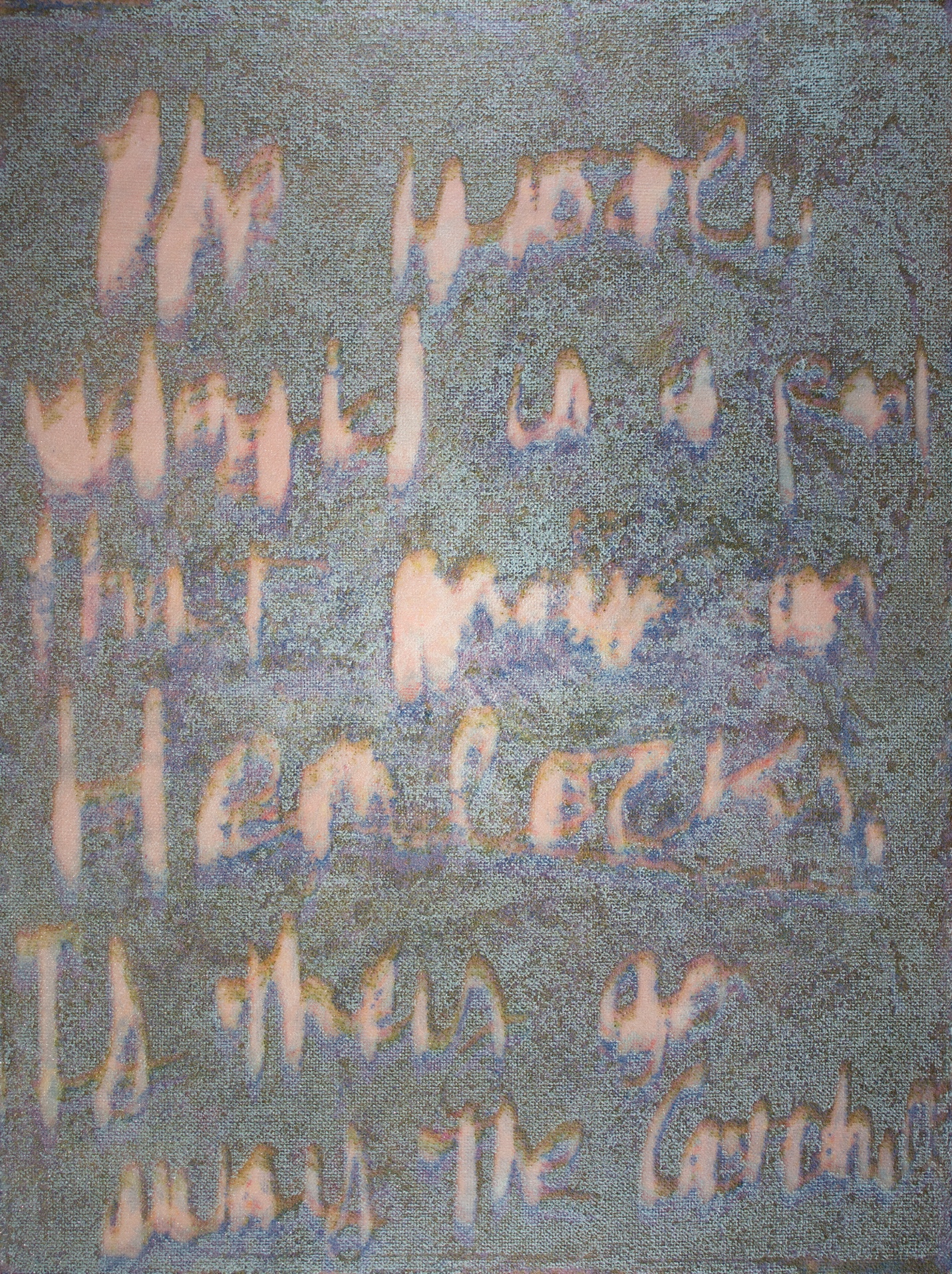In DIALOGUE

Hovey Brock’s show, The Invasive Species, in collaboration with Cornell’s Eco Arts features a series of paintings that focuses on how the climate crisis in general and invasive species in particular threaten the forests of the Northeast—an outgrowth of his Crazy River project that focused on the climate crisis in the Catskills. The paintings have phrases or questions that have been obsessing Brock for some time.
In this show, your paintings are interspersed with photos and scientific data on invasive species in New York State. What can you tell us about the paintings and how do they relate to the text and photos?
For example, my painting Invasive Species, 2023 (pictured below), has the phrase “Invasive species are the single biggest threat.” This work came out of a Catskill Environmental Research and Monitoring conference that I attended in October 2022. The big takeaway from that conference for me was that in the short term, meaning the next 50 years, invasive species would have the biggest adverse impact on the Catskill ecosystem, more so that the effects of global warming. Next to Invasive Species, Mann Library places a panel that showed the entire Northeast of the United States is especially at risk from the number of invasive species—plants, animals, and fungi—that have been introduced to that region. The reasons for this heightened risk come down to a wide variety of trees that make suitable hosts for invasive insect and the population density of the region that creates more opportunities for people to introduce non-native species.
Some of the paintings are more ruminative, such as An Ethics of Materialism, 2023. The words on that painting ask whether we aren’t materialistic enough, in that we are not in touch with what is going on in the material world around us. If we were, we be more responsive to the damage we are doing to it.

Also featured in this exhibition are paintings of students in Earth Projects, an immersive seven-week field course in art and ecology designed and taught by multi-media artist Anna Davidson and her graduate teaching assistant, Anna Mehlhorn, M.S. ’25. What is the genesis of this multi-layered show, and what was the curatorial approach?
I wanted to reach out to the Eco-Arts program which combines life sciences and art in its curriculum, whose emphasis dovetails with my work. I was able to get Professor Anna Davidson to contribute work by some of her students in the Earth Projects class from 2023. She had them collaborate on a series of four painting that represent the cross sections of four tress that are threatened by invasive species and climate change. They include the white ash in rapid decline from the emerald ash borer, a devastating insect that began to appear in North America in the 1980s.
Then there is the balsam firm, which is moving north as global temperatures rise. There is the maple tree, in decline from habitat loss and the impacts of weather patterns shifting to more extreme variations in dry and wet spells, which exacerbate the growth of fungi that kill off maples. Last is the eastern hemlock, which has been dying off in huge numbers after the hemlock woolly adelgid, an aphid-like insect, was introduced to the East Coast in the 1950s. By including the students, I was looking to attract a broader audience for my and the Earth Projects’ messages about declining forest habitat in the Northeast.
I’m glad I invited the students to the show. They were thrilled to be included. As for Professor Davidson, she was happy to show her students art can have a life long after its creation.

I want to get a closer look at your activism. For instance, you sought help from the New York State Hemlock Initiative in protecting trees on your family’s land in Claryville, New York, in the Catskills region. Tell us about that and what was the outcome.
Sure. Actually, Mark Whitmore, the director of the New York State Hemlock Initiative (NYSHI) and professor of entomology at Cornell, reached out to me in my role as a landowner in the Catskills. He has been tireless in promoting awareness around the hemlock woolly adelgid (HWA), which as I said above is destroying the eastern hemlocks in Appalachia, the Upper Midwest, and the Northeast. He made a presentation to me and some other landowners, and on the strength of his remarks I began to treat my hemlocks with neonicotinoids to keep them from succumbing from the HWA. I know “neonics” are controversial as they have been identified as one the causes of beehive collapse aka Colony Collapse Disorder.
Because hemlocks are gymnosperms, however, they don’t need pollinators to reproduce so honeybees and other insects don’t get contaminated with the neonics. Studies have also shown that river bottom insects have not been affected by riverside hemlocks that have gotten treatments. But it’s always a judgment call, a balancing act when you intervene. I made the judgment that I wanted to do what I could to keep my hemlocks free of the woolly adelgid by artificial needs until bio controls could do the job. That seems to be happening now.
So, I already knew Mark when I asked him if I could show my paintings at Cornell’s Mann library, the library connected with his entomology department. He liked the idea, and we worked together to put up a show that included participation from his department and my paintings. At the show’s opening, before my reception, there was an hour-long presentation about the HWA by Grace Haynes who works with Mark at NYSHI, and Johannes Lehmann, a soil scientist who has built a fantastic community space in Ithica known as the Soil Factory that showcases collaborations between artists and scientists.
It has been a great experience working with Mark and his department as well the exhibition coordinators at the Mann Library, Jenny Leijonhufvud and Eveline Ferretti. Unfortunately, everyone at Cornell is feeling squeezed now that the Trump administration has started slashing the research budgets at leading universities. Please support your higher institutions of learning in any way you can. If they lose the ability to gather and publish their data, we are at a greater loss than ever trying to manage the climate crisis.
PS: I’ll be giving a talk at the Mann Library on June 6th at 10:00 am if anyone is in Ithaca on that day.
 Hovey Brock, Woolly Adelgid, 2020, acrylic on panel, 48” x 36”
Hovey Brock, Woolly Adelgid, 2020, acrylic on panel, 48” x 36”
Make your tax-deductible donation today and help Art Spiel continue to thrive. DONATE
“Invasive Species,” Feb. 27 at Mann Library with a talk, “Hemlock Woolly Adelgid and Other Forest Threats: Engaging Science and Art to Meet the Challenge,” a collaborative exhibition with Cornell’s Eco Arts and the New York State Hemlock Initiative, Feb. 27th – August 15th
Related articles:
https://artspiel.org/into-the-microverse-micrographia-with-shae-nadine-subtleflux/
https://artspiel.org/the-tale-of-lost-waters-susan-hoffman-fishman-at-five-points-arts/
https://artspiel.org/ellen-kozak-and-scott-d-miller-river-rising-at-hunterdon-art-museum/
https://artspiel.org/diane-burko-bearing-witness-at-cristin-tierney/
https://artspiel.org/t-d-motley-the-art-of-farming/
https://artspiel.org/oskar-landi-trekking-unfamiliar-environments/
https://artspiel.org/donna-conklin-king-fifty-eight-feet-down-the-ocean/